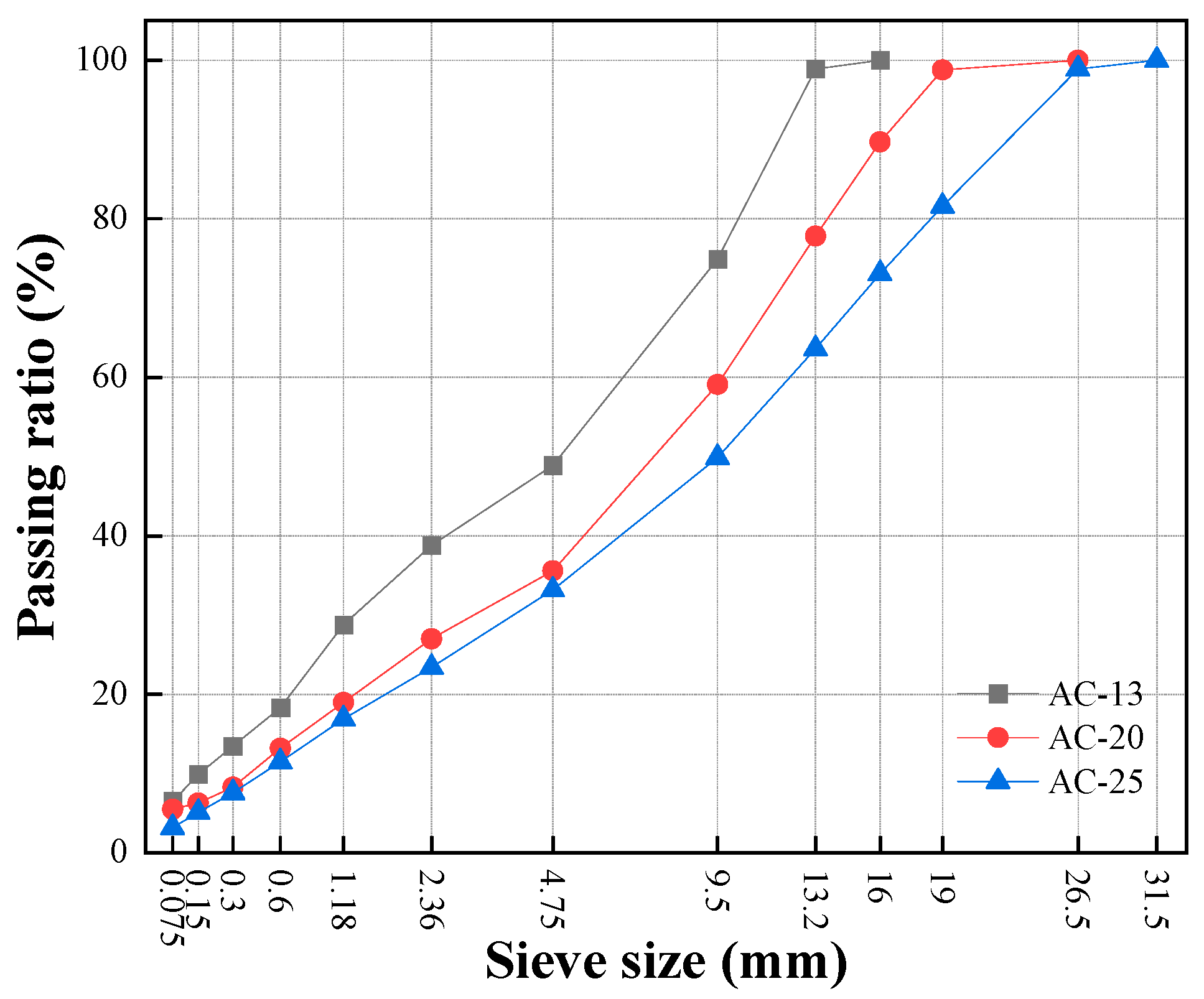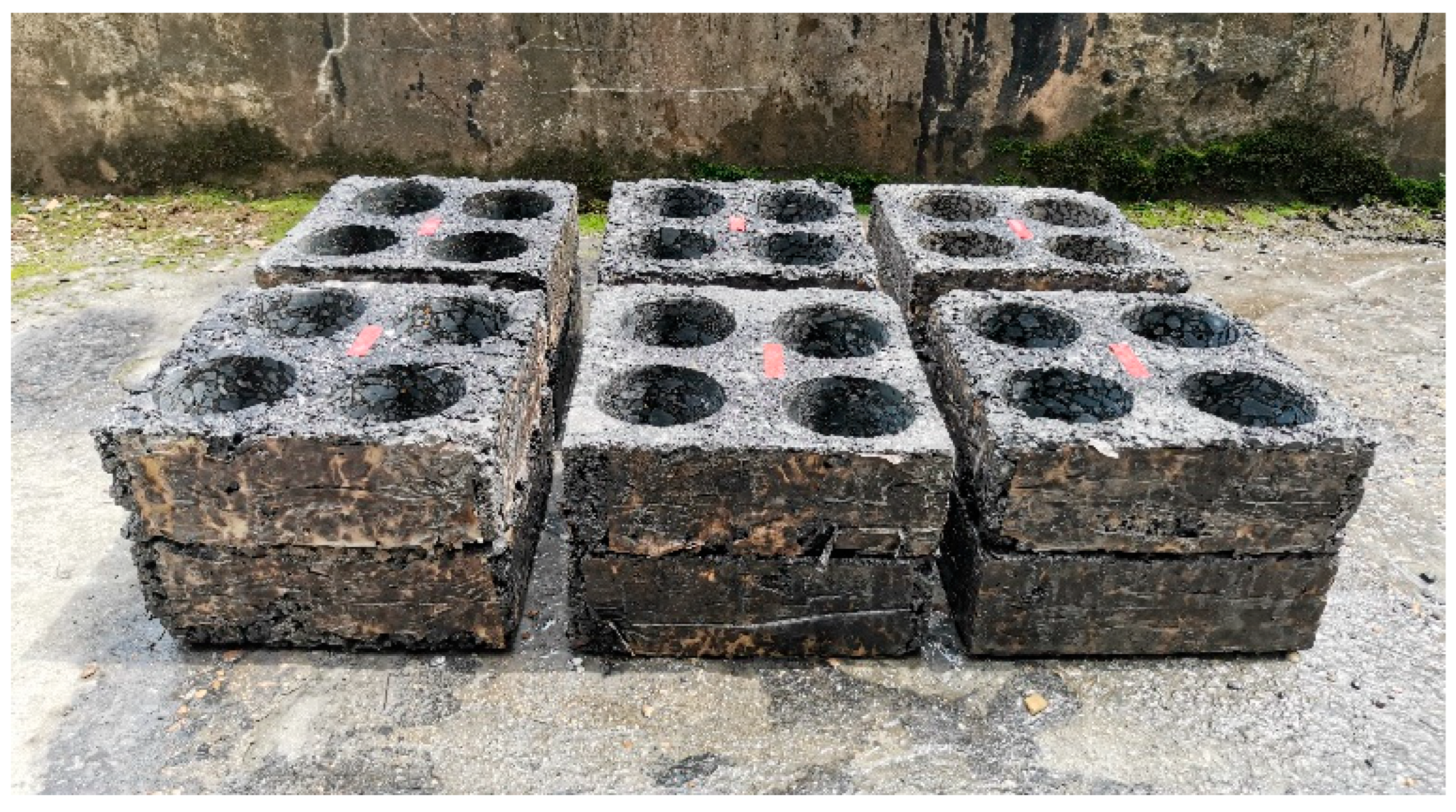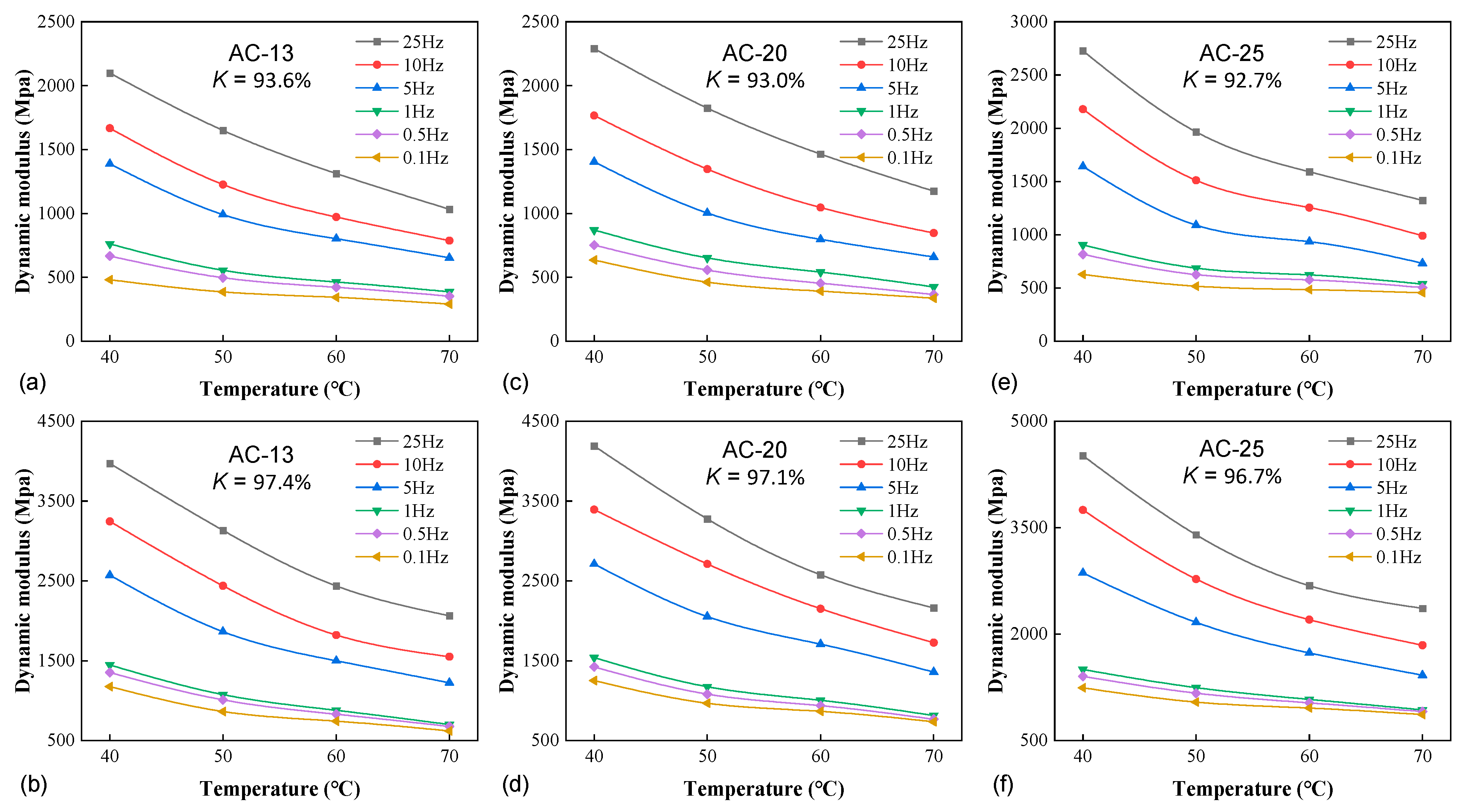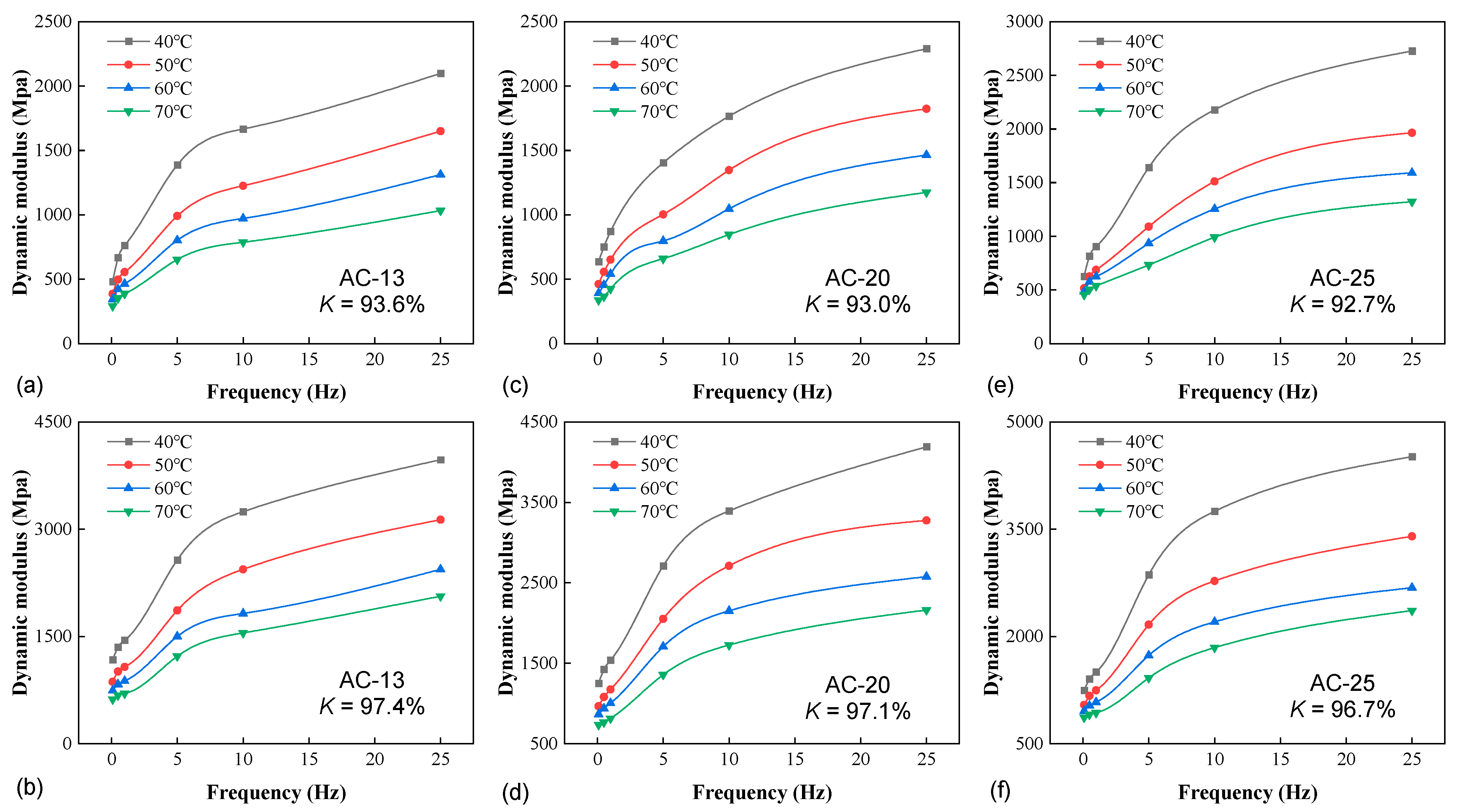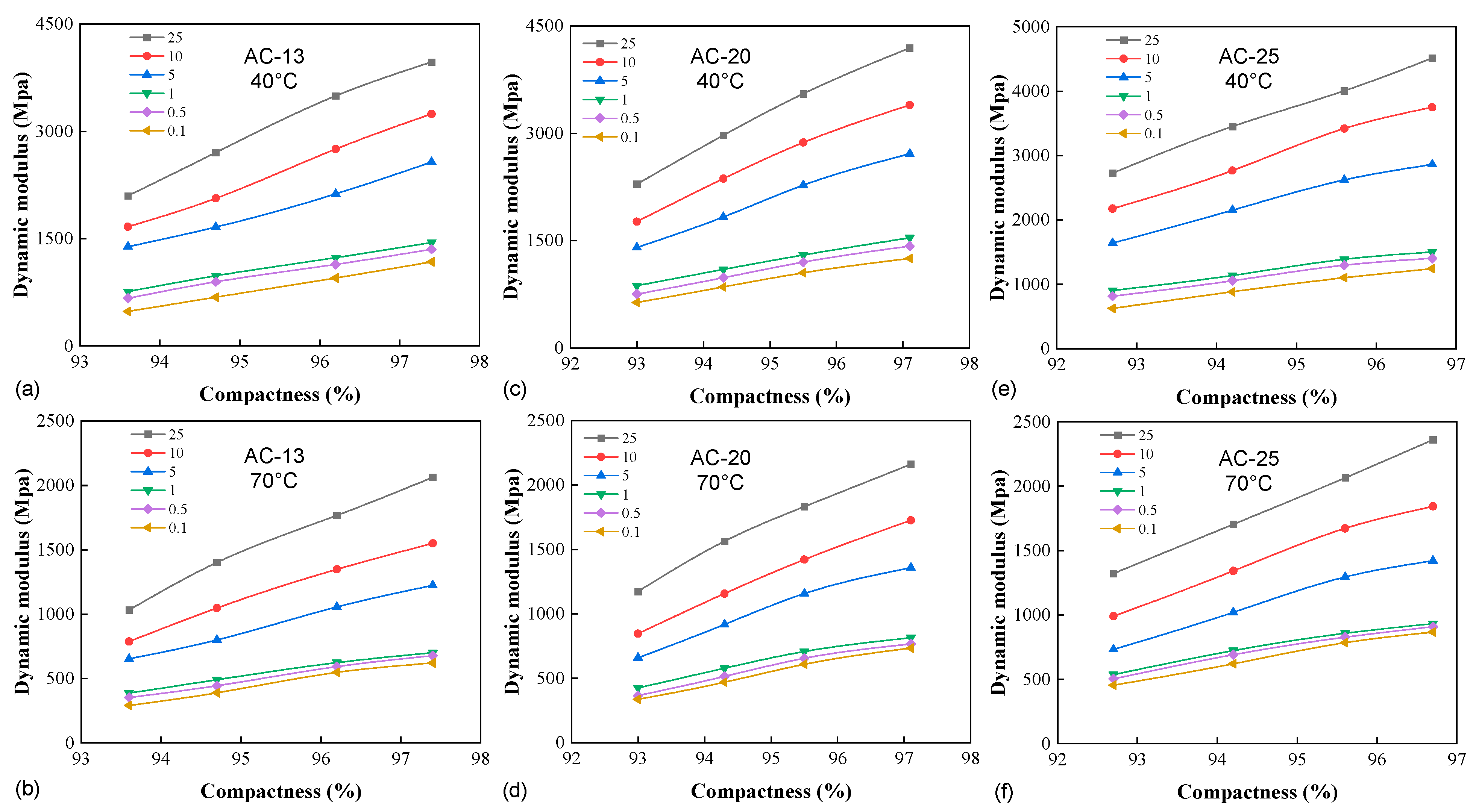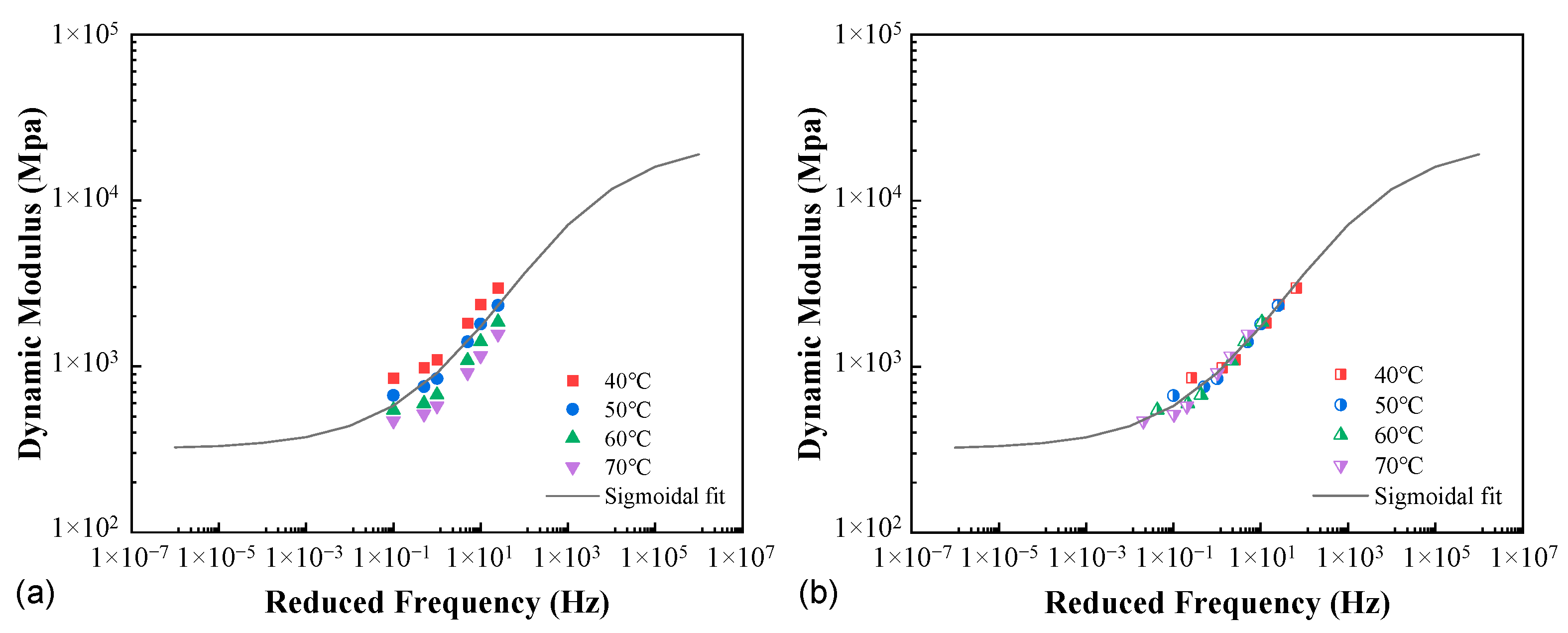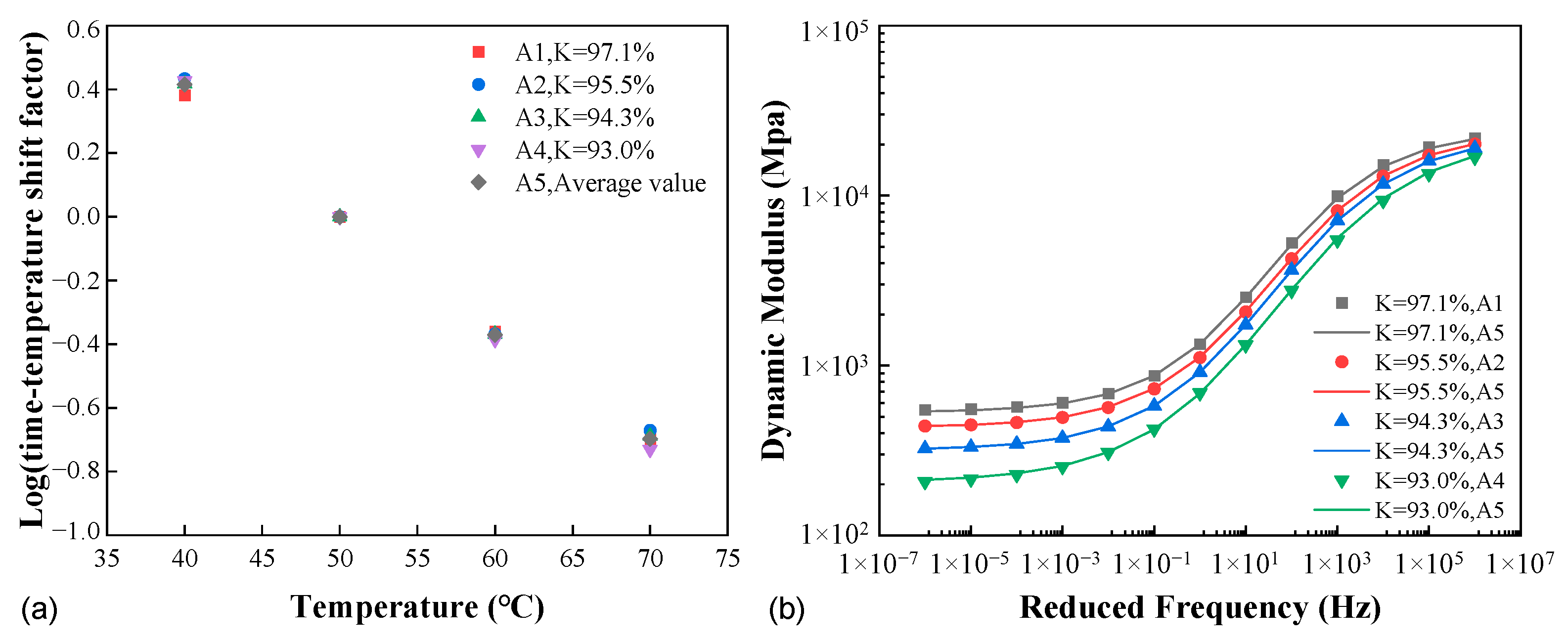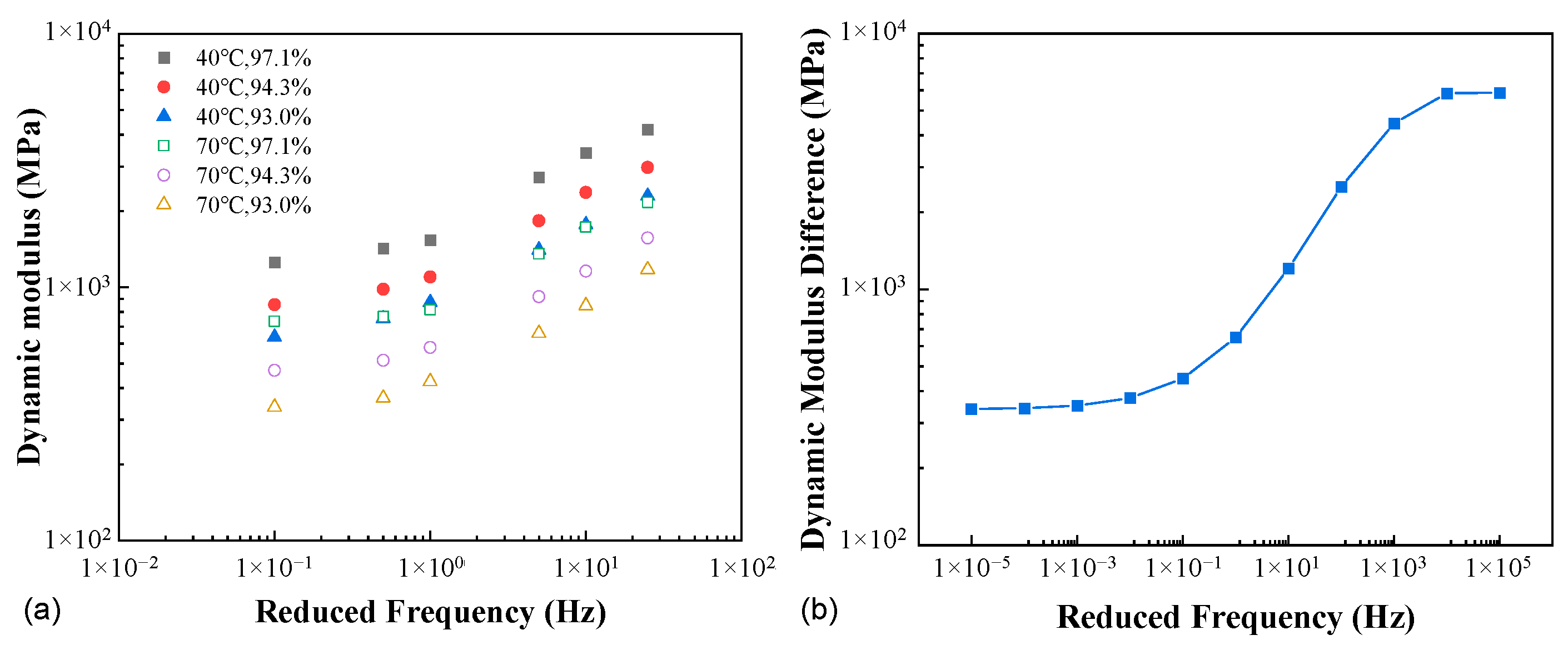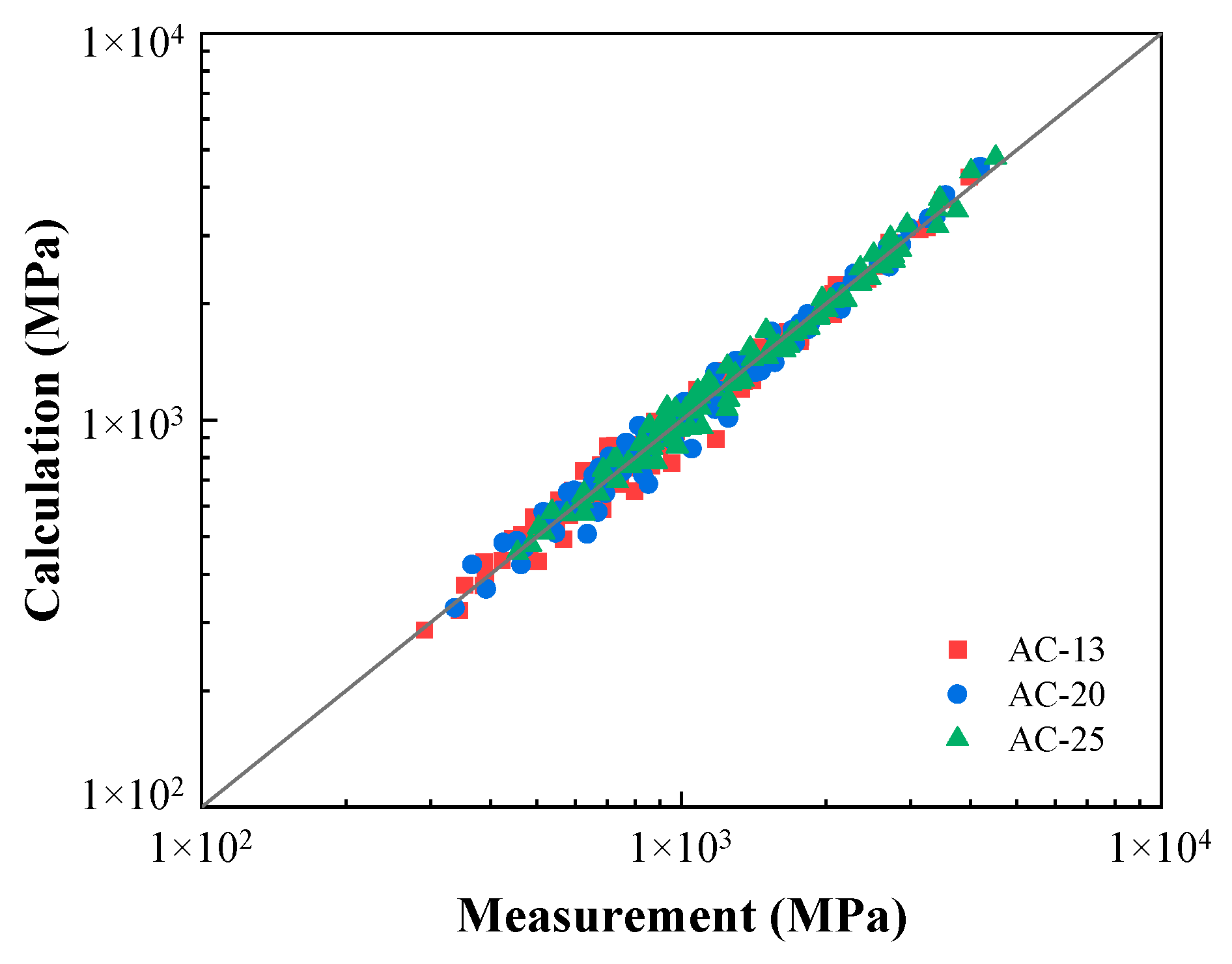3.2.1. Horizontal Shift Due to Time–Temperature Equivalence
The time–temperature superposition principle states that for a thermorheologically simple material, the modulus isotherms can be horizontally shifted to formulate a single smooth master curve, thereby greatly extending the applicable range of temperature and time/frequency. It should be noted that, however, this equivalence has been mostly validated in the cases with zero or a constant confining pressure. Its applicability should be checked against the data in the present study in the first step given the variable confinement.
The attempt to establish the modulus master curve followed the usual procedure with the use of the classic Sigmoidal function:
where |
E*| is the confined dynamic modulus;
fr denotes reduced frequency;
α,
β,
δ, and
γ are fitting coefficients, in which
α is logarithmic of the lower asymptote and (
α +
δ) defines the upper asymptote, and
β and
γ are parameters related to the shape of the curve. The reduced frequency is obtained via
where
f is loading frequency, and
aT is the time–temperature shift factor. A variety of forms are available in the literature to describe the functional dependence of
aT on temperature [
19]. This study adopted the second-order polynomial expression:
where
T is temperature,
TR denotes the reference temperature which was set to 50 °C here, and
a1 and
a2 are regression constants.
As above-mentioned, (
α +
δ) is the logarithmic of the maximum modulus corresponding to the most extreme conditions of low temperatures and/or high frequencies, for which a direct determination is not feasible in the laboratory. Considering that the stiffness of dense-graded asphalt mixtures is generally pressure-insensitive at low temperatures [
24], it was decided to estimate this upper asymptote by means of the well-accredited Hirsch model which takes the volumetric parameters as the arguments [
30]:
where |
E*|
max is the maximum dynamic modulus, VMA and VFA are defined earlier in
Table 5, and
Pc denote the aggregate contact volume obtained as
Figure 7 illustrates the application of the time–temperature superposition principle for the AC-20 mixture at the compactness
K = 94.3%, as well as the Sigmoidal fitting curve. It appeared that at the given degree of compaction, the time–temperature equivalence was not weakened by the variable confinement. This observation needs to be checked against the other mixtures and different compactness levels. Further, the time–temperature shift factor is, in general, material-dependent. The external or internal factors that would impact the material properties in a general sense may change the time–temperature equivalence and thus enter the shift factor function as an additional argument (for instance, moisture [
31]). For the interest of the present study, whether and how the compactness would affect the shift factor is the question posed. Additionally, it is worth mentioning that as a reaction to the vertical loading, the variable lateral confinement also depends on the mixture compactness.
To address the above concerns, the horizontal shift factors at all compactness levels for AC-20 are provided and compared in
Figure 8a, represented as A1 to A4 in the legend. It is noted that the compactness within the range considered had a very minor impact, and it seemed that the shift factors could be treated as independent of the degree of compaction. For the purpose of further verification, the four sets of shift factors were averaged (denoted as A5), and the result was applied in each case of compactness to obtain the master curve, which was then compared to those using the individual shift factors. As shown in
Figure 8b, the two versions of shift factors yielded very close agreement in the master curves.
The same procedure was applied to all the mixtures, and the standard error of regression (SSR) was used to quantify the degree of agreement between the measured moduli and those calculated using the individual and averaged shift factors:
where
n is the sample size (the total number of data points), and
xi and
are the
i-th measured and calculated moduli, respectively.
Table 7 lists the SSR results for the three mixtures. All the errors are below 5% for different compactness levels and are also comparable between the two versions of shift factors, indicating the adequacy of assuming the independence of compactness in the time–temperature shift factor. In other words, the time–temperature equivalence is mathematically not affected by the compactness within the range considered herein. Specifically, the variable
K does not enter Equation (6) as an additional argument.
3.2.2. Vertical Shift Due to Variable Compactness
It can be inferred from
Figure 8a that the horizontal shifting alone cannot accommodate the strengthening effect of increase in the compactness. In order to construct the modulus master curve unifying all the affecting factors including and in addition to time and temperature, the techniques of shifting (horizontal and/or vertical) and even rotation have been proposed in the literature [
32,
33]. In this study, given the independence of compactness in the time–temperature horizontal shifting, it becomes reasonable to inspect its role in the vertical shifting given the strengthening effect. A number of valuable references in the literature have provided formulations of the vertical shift factor as a function of the (constant) confining pressure, moisture, or deviatoric stress in addition to time and temperature [
20,
34,
35]. The vertical shift factor herein was expected to be a function of time, temperature, and compactness.
Figure 9a presents the dynamic moduli for AC-20 at three compactness levels and two temperatures of 40 °C and 70 °C. For the temperature of 40 °C, the amount of vertical shift in the double logarithmic space for
K = 97.1% is consistently higher than that for
K = 93.0% if 94.3% is treated as the reference compactness, hence the dependence of the vertical shift factor on compactness. Further, at both temperatures, the amount of shift required varies with the reduced frequency, hence the dependence on time/frequency and temperature. In fact, the apparent dependence on reduced frequency can be illustrated more straightforwardly by the S-shaped curve in
Figure 9b, i.e., the difference between the master curves corresponding to
K = 97.1% and 93.0% (A1 and A4, respectively) in
Figure 8b.
In order to couple the effects of all three factors based on the above observations, the following expression was proposed to describe the vertical shift factor:
where
K0 is the reference degree of compaction,
α,
δ, and
fr have been defined earlier in Equation (4), and
a3–6 are fitting coefficients.
The complete mathematical model for the compactness-dependent confined dynamic modulus can thus be readily written as
in which a total of nine parameters are to be calibrated using, for instance, the Solver function built in Microsoft Excel, recalling that (
α +
δ) is estimated from the Hirsch model.
Table 8 summarizes the calibrated model parameters with a reference temperature of 50 °C and reference compactness of 94.7%, 94.3%, and 94.2% for AC-13, AC-20, and AC-25, respectively.
Figure 10 provides a comparison of the calculated versus measured dynamic moduli for the three mixtures tested at all conditions. Excellent agreement was yielded by the model with an R-square value above 0.98. The SSR for each mixture was also identified following Equation (9), and the results are 3.73%, 3.76%, and 2.95% for AC-13, AC-20, and AC-25, respectively. The errors are within the same range of those listed in
Table 7 using the individual models without the incorporation of the compactness
K. The efficacy and reliability of the proposed model is therefore substantiated.
